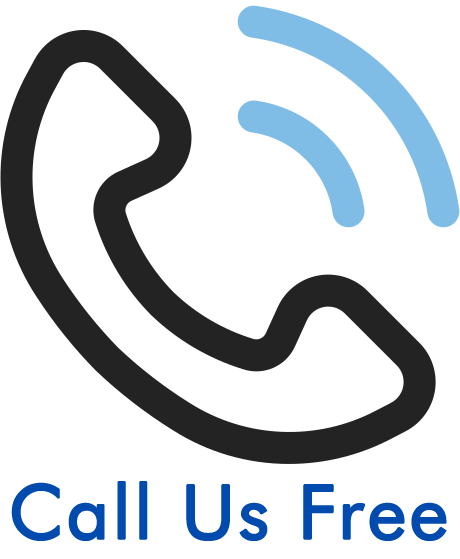How To Claim For Lifting Injuries At Work
If you have suffered any lifting injuries at work, you may be eligible to make a personal injury claim. However, you will need to prove that your injuries were caused by your employer breaching the duty of care they owed you. This guide will explore the legislation that outlines the duty of care they owe and the steps they can take to uphold this duty.

Lifting Injuries At Work Claims Guide
Within this guide, we will also explain the specific criteria that must be met to be able to make a personal injury claim.
Additionally, we will share examples of the evidence you could provide to help prove liability.
Furthermore, we will provide an overview of the compensation that could be awarded following a successful claim and how this might be calculated.
If you would like to discuss your potential claim further, you can get in touch with one of our advisors. They are here to offer you free advice regarding your claim 24 hours a day. They could also answer any of the questions you may have about seeking accident at work compensation.
Contact one of our advisors by:
- Calling 0800 073 8804
- Messaging an advisor using our live chat.
- Completing our ‘claim online’ form.
Select A Section
- How To Claim For Lifting Injuries At Work
- What Are Lifting Injuries At Work?
- How To Prove Your Employer Was Liable For Your Injury
- Examples Of Payouts For Lifting Injuries At Work
- How Legal Expert Could Help You Claim Compensation
- Related Manual Handling, Lifting And Accident At Work Claims
How To Claim For Lifting Injuries At Work
To be able to make a personal injury claim for the injuries you suffered in an accident at work, you must meet the following criteria:
- Firstly, you must be able to show that your employer owed you a duty of care.
- You must then prove that your employer breached this duty.
- Lastly, your injury must have been directly caused by this breach of duty of care. Together, this is known as negligence.
Per the Health and Safety at Work etc. Act 1974, all employers owe their employees a duty of care. They must take reasonable steps to ensure the safety of their employees whilst they are at work or performing work-related duties.
Additionally, the Manual Handling Operations Regulations 1992 outlines the responsibilities and duties of both employers and employees regarding safe manual handling.
If your employer were to breach their duty of care, such as by providing you with inadequate training, you could suffer various lifting injuries at work. In this instance, you may be eligible to make a claim.
What Is The Limitation Period To Claim For Lifting Injuries At Work?
Additionally, your claim must be started within the time limits outlined under the Limitation Act 1980. You will usually have 3 years to start your claim. However, some exceptions can be made to this 3-year timeframe:
- The time limit is suspended for a claimant who has a reduced mental capacity to put forward a claim themselves. During this time, a litigation friend could claim on their behalf. If no claim has been made and they regain the mental capacity to make their own claim, they will have 3 years from that date to start their claim.
- Minors under the age of 18 will have 3 years to start their claim once they turn 18. Before this date, the time limit is suspended, and a litigation friend could claim on their behalf.
Contact one of our advisors today to see if you have enough time to start a claim if you have suffered any lifting injuries at work.
What Are Lifting Injuries At Work?
You could suffer various types of lifting injuries at work. Some examples include:
- Strains and sprains – For example, you could strain an arm muscle if you are consistently lifting objects that are heavy.
- Back injuries – This could include slipped discs or muscle strain.
- Hernias – This could be caused by repetitive straining when lifting heavy objects.
However, no matter what type of injury you have suffered, to be eligible to make a personal injury claim, you must prove that negligence occurred.
What Is The Recommended Maximum Lifting Weight At Work?
The Health and Safety Executive (HSE) have provided manual handling at work guidance. Within it, they provide recommended weight limits for men and women when lifting or lowering from different heights.
For women, these include:
- Shoulder height – 3-7 kg.
- Elbow height – 7-13 kg.
- Knuckle height – 10-16 kg.
- Mid-upper leg height – 7-13 kg.
- Mid-lower leg height – 3-7 kg.
For men, these include:
- Shoulder height – 5-10 kg.
- Elbow height – 10-20 kg.
- Knuckle height – 15-25 kg.
- Mid-upper leg height – 10-20 kg.
- Mid-lower leg height – 5-10 kg.
How To Prove Your Employer Was Liable For Your Injury
Providing sufficient evidence could help with strengthening your claim. Evidence could help prove that you suffered lifting injuries at work and that your employer was liable for them.
The steps you could take to collect evidence can include:
- Requesting CCTV footage of the accident.
- Filling out a report in the accident book if your workplace has one on-site.
- Taking down the contact details of any witnesses for them to provide a statement later on.
- Gathering medical evidence about the injury you suffered. This could include requesting a copy of your medical records.
Do not hesitate to get in contact with one of our advisors if you are still unsure what evidence you could provide to help support your claim. They could put you in contact with one of our solicitors who could help you with this aspect of the claims process.
Examples Of Payouts For Lifting Injuries At Work
Following a successful claim, you should receive compensation for the pain and suffering caused by your injury as well as the impact on your quality of life via general damages.
For the following table, we have used the figures from the most recent edition of the Judicial College Guidelines (JCG), which was published in April 2022. Many legal professionals will refer to this document when valuing general damages as it lists compensation guidelines for various injuries.
However, please only use this table as a guide. This is because each claim is unique and the settlement awarded will depend on the specific circumstances of your case.
Compensation Table
| Injury | Notes | Guideline Value |
|---|---|---|
| Back Injuries – Severe (iii) | Soft tissue injuries that lead to chronic conditions. | £38,780 to £69,730 |
| Back Injuries – Moderate (i) | A prolapsed intervertebral disc that requires surgery. | £27,760 to £38,780 |
| Back Injuries – Moderate (ii) | Disturbed ligaments and muscles which leads to back ache. This bracket also covers soft tissue injuries that accelerate or exacerbate pre-existing conditions. | £12,510 to £27,760 |
| Back Injuries – Minor (i) | Less serious sprains, strains and soft tissue injuries that fully recover without surgery within 2-5 years. | £7,890 to £12,510 |
| Neck Injuries – Severe (iii) | Severe soft tissue damage causing chronic conditions and a significant and permanent disability. | £45,470 to £55,990 |
| Neck Injuries – Moderate (ii) | Soft tissue or wrenching-type injury and a severe disc lesion causing cervical spondylosis. | £13,740 to £24,990 |
| Neck Injuries – Moderate (iii) | This bracket contains moderate soft tissue injuries with a protracted recovery period. | £7,890 to £13,740 |
| Elbow Injuries – Severe | Severley disabling injuries to the elbow. | £39,170 to £54,830 |
| Arm Injuries – Less Severe | Despite there being significant disabilities, an immense degree of recovery is expected to or will take place. | £19,200 to £39,170 |
| Wrist Injuries – Less Severe | Permanent disability such as ongoing pain and stiffness. | £12,590 to £24,500 |
Could I Receive Special Damages?
Additionally, you could be awarded special damages. Special damages compensate you for the past and future financial losses caused by your injury. Examples of losses that you could claim under special damages include:
- Travel expenses.
- Medical costs, such as paying for medications.
- Loss of earnings.
- Care costs.
However, you will need to provide evidence of these losses, such as your receipts, invoices or bank statements.
Contact our advisors today to learn more about the compensation you could receive when you make a successful claim for lifting injuries at work.
How Legal Expert Could Help You Claim Compensation
Our solicitors have experience handling various types of personal injury claims, including those made for injuries sustained in an accident at work. Additionally, if one of our solicitors agrees to take on your claim, they could offer to represent you under the terms of a Conditional Fee Agreement, which is a type of No Win No Fee agreement.
When working with one of our No Win No Fee solicitors on this basis, you generally won’t be expected to pay any upfront or ongoing fees for their services. You also won’t have to pay them for their services if the claim is unsuccessful.
Furthermore, for a successful claim, your solicitor will take a success fee from your compensation. The success fee is a legally capped percentage of your compensation award, and the amount your solicitor will take is usually discussed beforehand.
Contact our advisors to discuss your potential claim if you’ve suffered any lifting injuries at work. They could also put you in contact with one of our solicitors if they think you could be eligible to pursue a claim.
Contact Us
If you would like to discuss your claim further, you can contact one of our advisors. They can offer you free advice and answer any of the questions you may have about seeking personal injury compensation. Additionally, they could put you in contact with one of our solicitors who could help you with your claim.
Contact one of our advisors by:
- Calling 0800 073 8804
- Messaging an advisor using our live chat.
- Completing our ‘claim online’ form.
Related Manual Handling, Lifting And Accident At Work Claims
Further articles by us about accident at work claims:
- Lifting injury while pregnant at work – can I claim compensation?
- Nerve damage after an accident at work – can I make a claim?
- Unsafe practices and manual handling work accident claims
Additional resources:
- GOV – Request CCTV footage of yourself
- HSE – Accident at work book
- NHS – How to get your medical records
Contact our advisors for more information on how to make a claim for lifting injuries at work.
Written by Westwood
Edited by Robinson/ Mitchell

